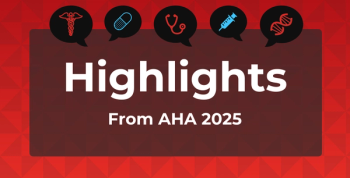
What Patients With Leukemia and Lymphoma Usually Ask About COVID-19 Vaccinations
Lee Greenberger, PhD, chief scientific officer of the Leukemia and Lymphoma Society, discusses common questions that patients with leukemia and lymphoma ask about COVID-19 and vaccination.
Transcript
What are the most common questions you receive at the Leukemia and Lymphoma Society from patients about COVID and vaccination? What are the key unresolved issues?
One of the key questions we got was, “I have no anti-spike antibodies. What does that mean?” And then the next question was, “I have some, am I protected or not?” And the answer is [that] if you had if you had no detectable anti-spike antibodies, that definitely was a warning sign. If you had some—and just to put it in perspective, the range of the assay goes from 0-2500 units per mL. This was a LabCorp assay, [and] LabCorp could literally turn around, get the blood, [and] get an answer back within two days, [so] patients knew what they had. And they could go back multiple times to see whether they improved or not. Some of those patients had anti-spike antibodies, let's say in the 100 or 200 range, [which is a] warning sign. We know now that if the anti-spike antibodies weren't over 1000 or in a range that matched normal patients, they were probably at risk. That all said, the immune response to the vaccinations is complicated. There is the so-called B-cell response—those cells produce antibodies, and that's what the anti-spike antibodies measure. There’s also something also called T cells, which can kill viral infected cells. We actually looked at T cells and asked, “Are you getting a T-cell response to the vaccination?” We looked in about 500 patients and did that analysis, and what we found is people can make T-cell responses. The T-cell responses can occur in about 50% of the patients, whether or not they've [had an] anti-spike response. So patients started asking, “Okay, I have a T-cell response. What does that mean?” The answer is, I'm not sure. Obviously, if you had no T-cell response and no B-cell response, that was a clear warning sign. But the patients that have T-cell responses, even if they have low anti-spike levels, they might be protected. It's a lot more subtle than that, and there's work coming out by others. It depends on what type of T cells you you respond by, and are they functional? It's not only the amount of T cells or that you have T cells, but is it functional? Our assay did not measure functional T cells. There are other assays that are measuring functional T cells, and that data is appearing, or will appear shortly. So those are the most common questions. We also got questions [like], “I'm on therapy, should I stop therapy? Should I pause the therapy and get the vaccine? Will I respond?” Those are all questions that still really remain up in the air. We really need to do a better job of understanding that not only for the COVID situation, but in the future, we're going to have to understand when people respond, the amount that they responded, and are they getting a functional response?
Newsletter
Stay ahead of policy, cost, and value—subscribe to AJMC for expert insights at the intersection of clinical care and health economics.









































